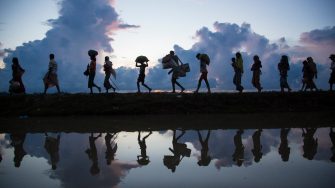
As the impacts of climate change are felt more broadly, more people will need to move – this we know. In 2020, disasters displaced 31 million people within their own countries, three times as many as by conflict. Extreme weather events are growing more frequent and intense. Salination, desertification, sea-level rise and other slow-onset impacts are starting to bite.
The pace of climate-related displacement is accelerating, but the public debate about it is still evolving. In law, there is no such thing as a ‘climate refugee’, though there are certainly refugees whose situation is made worse because of climate change. So, what laws, policies, data and action do we need to ensure safety for people forced from their homes in a warming world?
UNSW’s research in the area of climate mobility – led by Professor Jane McAdam AO, a pioneer in the field and Director of the Andrew & Renata Kaldor Centre – has been at the forefront of legal debates and policy development. Under her leadership, the Kaldor Centre gathered experts from around the world to sort through the most pressing issues on climate-related mobility at the most recent, cutting-edge Kaldor Centre Conference, ‘Whose move? Addressing displacement and migration in the face of climate change’.
Now, their expertise is available to share – in podcasts, videos and a conference report summarising discussions and highlighting solutions. Links to all these resources – with shortcuts to sessions focused on policy tools, litigation, data, planned relocations, and ways of advancing change – are available in the conference report, Making sense of movement in the context of climate change.
Image credit: UNHCR/Roger Arnold
